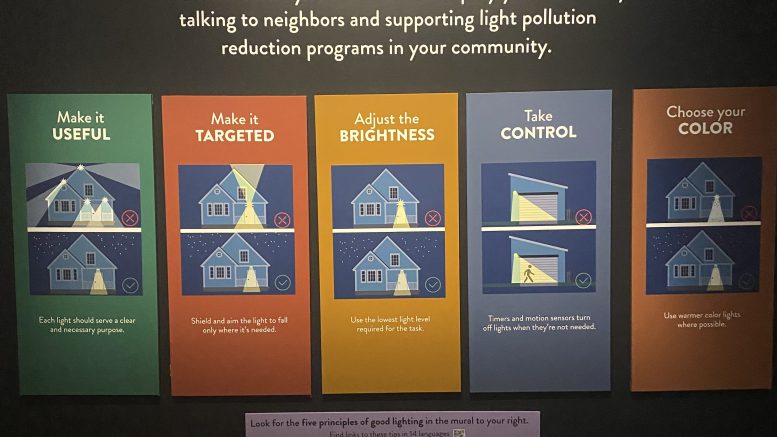As discussed before, light pollution is an issue that has a plethora of benefits to fix. Everyone can agree, reducing light pollution without compromising safety of cities and areas is a great thing; moreover, if done well, this work can create jobs and save money. Of the opportunities to reduce light pollution, such as buildings, home, and city streets, an area that is often under the radar is highway exit signs and lighting. Although not every highway has nor uses highway exit sign illumination, those that do, are more often than not contributing to light pollution.
We’re familiar with highways, and what the lighting look like, but why focus on highway exit signs? The reason being is that there are an estimated 10 highway signs per mile of highway and thousands of miles of highway in the US. Therefore, if there could be a way to reduce light pollution, while keeping safety intact and provide jobs, that would be fantastic!
What are the potential alternatives to lights at the bottom of the highway exit signs illuminating upwards? There could be several solutions, but we will take a quick look at 1 option of physically moving the lighting location, and another option of removing the light fixtures altogether.
There is the option to move the location of the existing lights from below the sign (pointing from the bottom of the sign to the top) to above the exit sign, which would shine the light down onto the exit sign. This would help ensure that the signs remain illuminated while still doing something to reduce light pollution. This would help reduce light pollution from highway signs significantly!
Another option would be to look at what Caltrans and many other states have implemented, which is to utilize reflective sign sheeting instead of lighting. A 2014 study by Caltrans showed that in Illinois, calculated in 2010 that the “estimated the annual cost savings when eliminating lighting for the average sign structure, including energy, relamping and repair, at approximately $5,000. Minnesota. Minnesota 1995 sign lighting study indicated that the initial cost of fabricating and installing the lighting system, catwalk, sign structure, guardrail and footing for a typical sign was $32,500 per structure. (Note that $5,500 of that is for the lights and catwalk alone.)” This is important as it shows that states will save thousands of dollars per fixture, and with hundreds or thousands of fixtures, there is significant money and energy and light pollution to be saved.
Moreover, if either one of these options were chosen and implemented, manufacturing jobs would be created to do the work. This is something that politicians on both sides of the aisle can get behind. Plus, another benefit is that not only would the cost per structure be saved to replace these signs with signs that reduce light pollution, it would reduce state operational expenses on highway lighting every year forward. Therefore, there is a long term economic incentive to do this as well. Plus, there look to be no significant negative impact to the drivers by doing this as well.
Make sure to check out our other articles on light pollution, and other topics, which we post weekly. To stay in the loop with updates, make sure to follow us on Twitter and Instagram.

Be the first to comment on "Highway Exit Signs Light Pollution: Visible But Ignored Source Of Light Pollution"